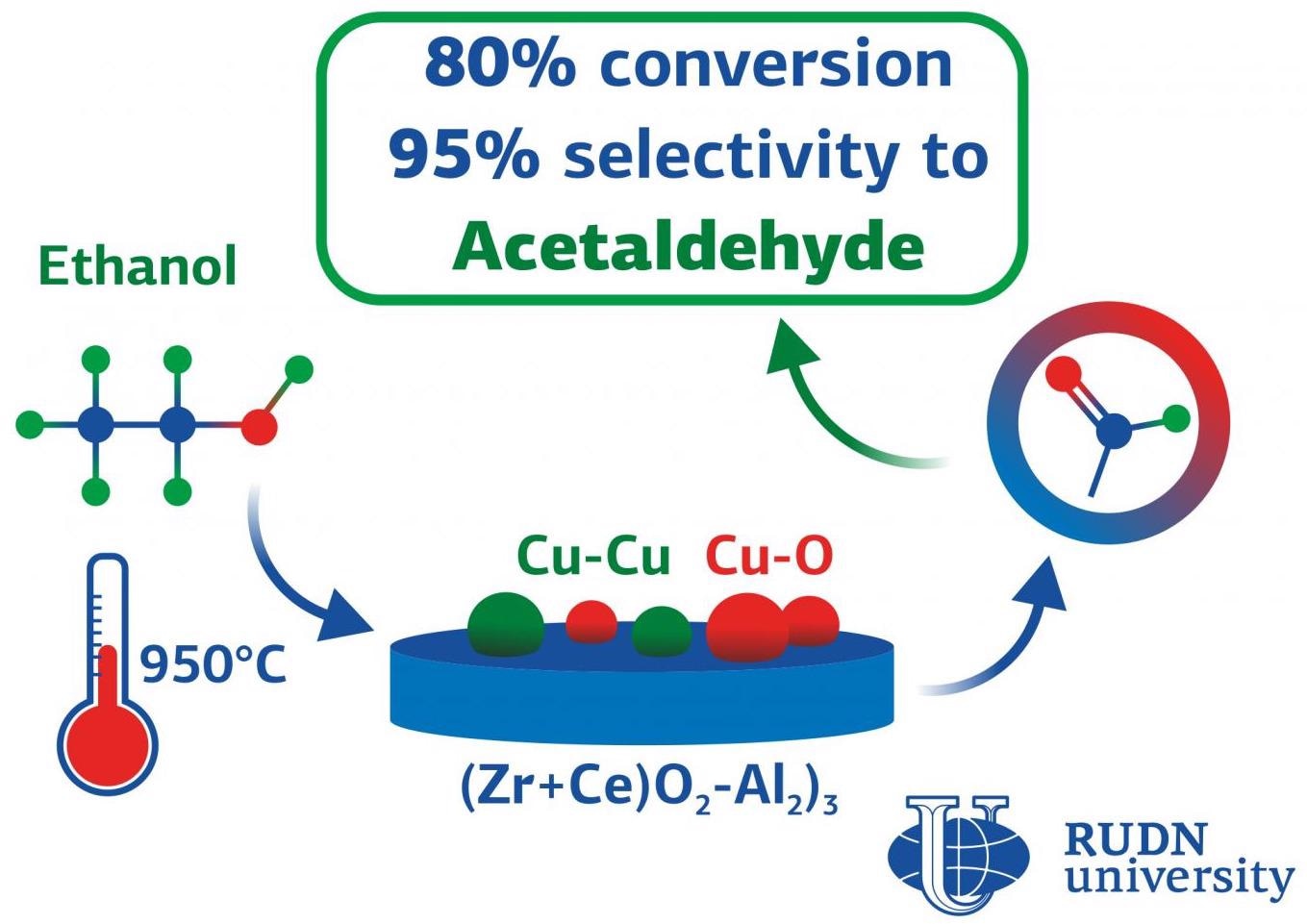Jun 3 2021
A new method to produce catalysts for ethyl alcohol conversion has been suggested by chemists from RUDN University.
 RUDN University chemists proposed a new way to synthesize catalysts for the conversion of ethyl alcohol. The obtained materials are promising catalysts for the selective conversion of ethanol, which is an important stage in the development of an alternative technology for obtaining valuable chemical synthesis products based on plant raw materials. Image Credit: RUDN University.
RUDN University chemists proposed a new way to synthesize catalysts for the conversion of ethyl alcohol. The obtained materials are promising catalysts for the selective conversion of ethanol, which is an important stage in the development of an alternative technology for obtaining valuable chemical synthesis products based on plant raw materials. Image Credit: RUDN University.
The acquired materials are potential catalysts that have been used for the selective conversion of ethanol, which is a crucial stage in developing an alternative technology for gaining useful chemical synthesis products based on plant raw materials. The study findings have been published in the Catalysis Today journal.
Ethanol fuel, or ethyl alcohol, is synthesized from plant material by the fermentation process of agricultural or industrial waste biomass. It is utilized as a more eco-friendly fuel than gasoline. However, this is not its only use—ethanol can be transformed into diethyl ether, acetaldehyde, and other chemicals that are highly sought after in the industry.
To activate such chemical reactions, highly efficient catalysts are needed. But present catalysts include valuable metals, and hence they are very costly to utilize. Chemists from RUDN University have suggested new catalysts based on zirconium and aluminum, altered using copper.
The best-known catalysts for ethanol conversion are based on oxides promoted by noble metals. However, they are quite expensive. A more affordable option is catalysts with copper as the active phase, but so far, the best option has not been found among them.
Anna Zhukova, PhD, Associate Professor, Department of Physical and Colloidal Chemistry, RUDN University
“Improvements are required to use these catalysts to ensure both high conversion and selectivity of the reaction—that is, to leave as little ethanol as possible unprocessed and at the same time to obtain the necessary substances, and not by-products,” added Zhukova.
Two methods were integrated by RUDN chemists to enhance the efficiency of catalysts for acetaldehyde production. Initially, they mixed oxides of various metals in nanocomposites: zirconium, cerium, and aluminum. They made five kinds of powders with various ratios of the oxides.
Five of them were made at a comparatively low temperature of 180°C, and the other five were heated to 950°C. This made it viable to develop various structures in the materials. The calcined samples had a higher pore volume and diameter.
The second method was the addition of copper. All the powders were made to soak in an aqueous copper nitrate solution, dried at room temperature, and treated with hydrogen flow at 400°C. Then, the completed catalysts were tested in the ethanol vapor dehydrogenation reaction.
The chemists positioned them in a thin layer on a porous filter and subsequently introduced alcohol vapors in the helium flow. The reaction was performed at temperatures ranging from 240°C to 360°C.
All obtained systems demonstrated high alcohol conversion and selectivity to acetaldehyde. The copper-containing catalysts with 5% aluminium oxide produced significant amounts of acetaldehyde with selectivity above 80% at 3600 °C.
Anna Zhukova, PhD, Associate Professor, Department of Physical and Colloidal Chemistry, RUDN University
“We found that the mixed composition of the oxides creates conditions for the formation of active centers on the surface of the catalyst from copper ions with different charges. The best option is to use a mixture of oxides with a small content of aluminum in the synthesis of the catalyst and calcinate them at 950°C,” added Zhukova.
Journal Reference:
Zhukova, A. I., et al. (2021) Study of Cu modified Zr and Al mixed oxides in ethanol conversion: The structure-catalytic activity relationship. Catalysis Today. doi.org/10.1016/j.cattod.2021.02.015.